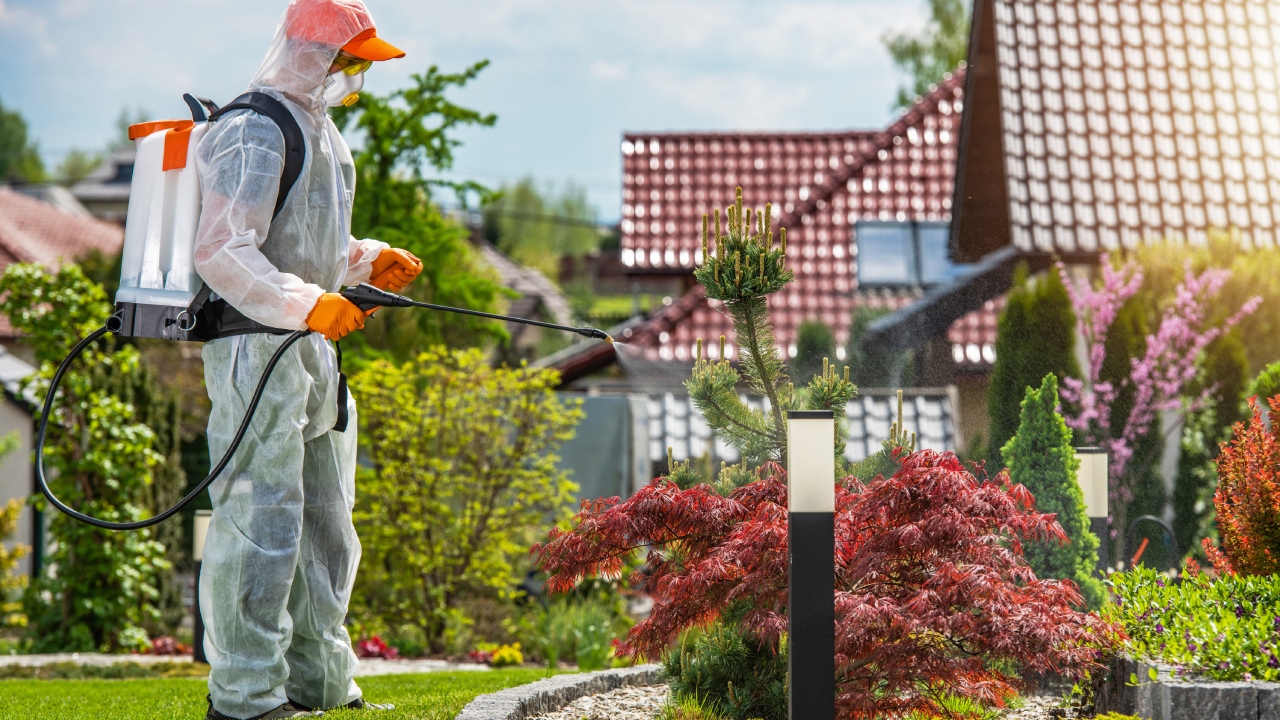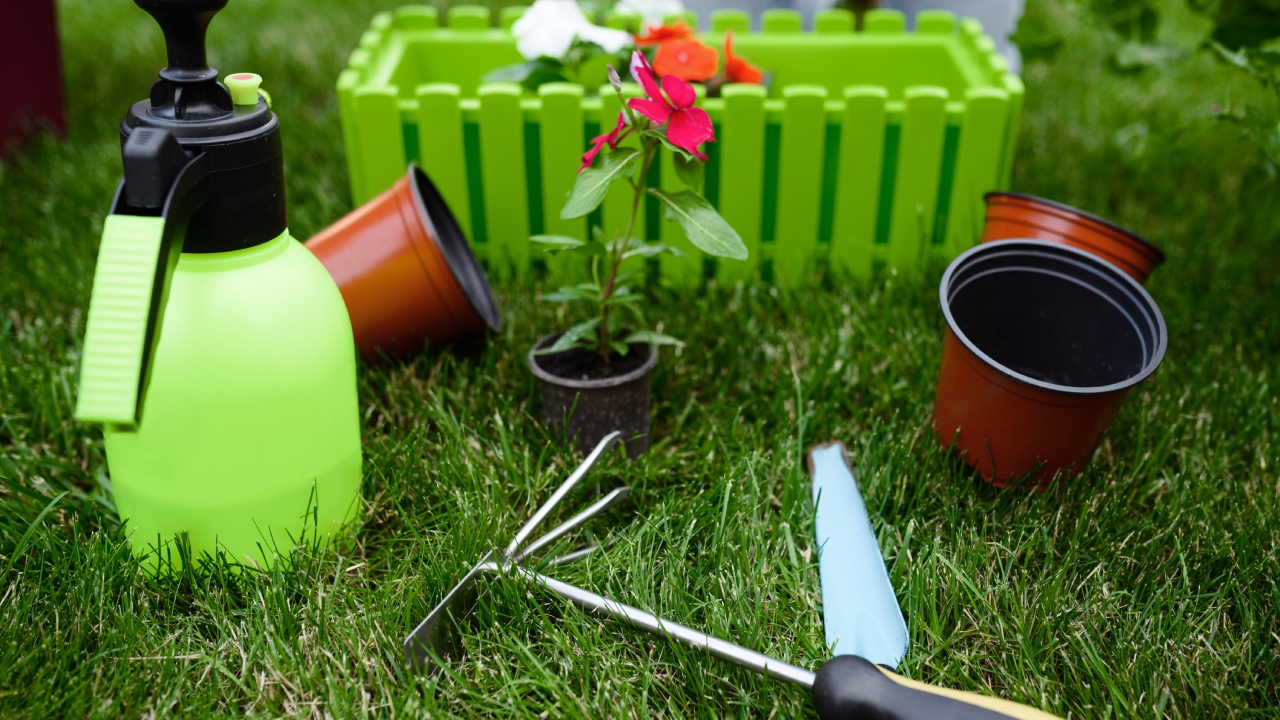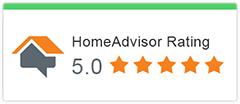The Pitfalls of DIY Pest Control
Thinking about tackling those pesky pests on your own? Sure, it might seem like a wallet-friendly idea, but let’s break down why it might not be the best move.
Risks of DIY Pest Control
Going solo on pest control can lead to some serious headaches:
- Chemical Hazards: Those store-bought pesticides? They can be pretty nasty. We’re talking about chemicals that can harm you, your pets, and the environment. The World Health Organization says there are around 3 million cases of pesticide poisoning every year, mostly from DIY attempts gone wrong.
- Half-Baked Solutions: Pests can get used to certain chemicals if they’re not used right. This means your DIY efforts might just annoy them instead of getting rid of them, making the problem even harder to solve.
- Making Things Worse: Without the right know-how, you might end up attracting more pests. Using the wrong bait or pesticide can turn your home into a pest party zone (EcoCare Pest Control).
Cost Considerations
DIY pest control might look cheap at first, but it can hit your wallet harder in the long run:
- Buying Dud Products: A lot of over-the-counter pest control stuff just doesn’t work as well as the pro-grade solutions. You’ll end up buying and applying these products over and over, which adds up.
- Calling in the Pros Anyway: When your DIY methods flop, you’ll need to call in the professionals. This not only costs more but also means the pests have had more time to cause damage.
- Time Sink: DIY pest control eats up your time—time you could spend doing something more productive. This hidden cost can really add up.
| Cost Factors | DIY Pest Control | Professional Services |
|---|---|---|
| Initial Cost | Low | Moderate to High |
| Product Effectiveness | Often Low | High |
| Repeated Purchases | High | Low |
| Time Investment | High | Low |
| Long-Term Cost | Potentially High | Moderate to Low |
So, while DIY pest control might save you a few bucks upfront, the long-term costs and risks often make hiring a pro the smarter choice.
Why You Should Leave Pest Control to the Pros
Know-How and Experience
When it comes to pest control, experience matters. Companies like Terminix and Orkin have seasoned exterminators who can spot the type of pest problem, find where it’s coming from, and figure out the best way to get rid of it (This Old House). These folks have seen it all, from ants to rats, and know how to handle each situation. Their skills ensure that pests are not just kicked out but also kept from coming back (EcoCare Pest Control).
Health and Safety First
Trying to handle pests on your own can be risky. Using strong chemicals without knowing what you’re doing can be dangerous. The World Health Organization says there are about 3 million cases of pesticide poisoning every year, mostly from DIY attempts gone wrong (EcoCare Pest Control). Pros, however, use products that are safe for you, your pets, and the planet. They have access to top-notch, eco-friendly solutions that get the job done without the nasty side effects.
Lasting Results
One of the biggest perks of hiring professionals is that their solutions last. DIY methods might give you a quick fix, but they often don’t solve the root problem. Pros use a mix of techniques to not only get rid of pests but also keep them from coming back (This Old House). This includes regular check-ups, using the right chemicals, and putting preventive measures in place (EcoCare Pest Control).
| Aspect | DIY Pest Control | Professional Pest Control |
|---|---|---|
| Expertise | Limited | Extensive |
| Health Risks | High | Low |
| Environmental Impact | Potentially Harmful | Eco-Friendly Options |
| Long-Term Effectiveness | Temporary Relief | Comprehensive Solutions |
By focusing on know-how, safety, and lasting results, professional pest control services are a better choice than DIY methods. This means you can relax and enjoy a pest-free home.
Effective Pest Control Methods
Got pests? Let’s talk about how to kick them out for good. There are two main ways to handle these unwanted guests: chemical treatments and biological control. Each has its perks and is best for different kinds of pest problems.
Chemical Treatments
Chemical treatments are the go-to for many DIYers and pros alike. Most pest control companies use pesticides like pyrethrins and pyrethroids, including Permethrin. These chemicals mimic natural pesticides found in chrysanthemums. They’re great at quickly wiping out a variety of pests.
Pros often use these chemical pesticides for serious infestations. Nowadays, many top-notch companies offer eco-friendly and green chemical mixes to keep Mother Earth happy (Insectek Pest Solutions). These treatments are especially handy when you need fast results.
| Chemical Treatment | Features | Typical Use |
|---|---|---|
| Pyrethrins | From chrysanthemums, eco-friendly | Homes and businesses |
| Pyrethroids | Synthetic, long-lasting | Homes and businesses |
| Permethrin | Broad-spectrum, widely used | Homes and businesses |
Biological Control
Biological control is all about using nature to fight nature. Think natural predators, plants, or organic compounds to keep pests in check. This can be a great DIY method or used with professional services, depending on how bad the infestation is.
This method is more eco-friendly and can offer long-term solutions by messing with the pests’ life cycles. For example, releasing ladybugs to eat aphids or using nematodes to target soil pests are common strategies.
| Biological Control | Features | Typical Use |
|---|---|---|
| Ladybugs | Eat aphids | Gardens and greenhouses |
| Nematodes | Microscopic worms for soil pests | Lawns and gardens |
| Organic Compounds | Plant extracts and oils | Home gardens |
Both chemical and biological methods have their pros and cons. Chemical treatments are quick and effective, while biological control is sustainable and eco-friendly. Sometimes, a mix of both is the best way to go.
Knowing your options helps you decide whether to handle the pest problem yourself or call in the pros. This way, you can choose the best approach for your situation, ensuring your pest control efforts are safe and effective.
Factors That Matter in Pest Control Choices
Choosing between DIY pest control and hiring the pros isn’t always straightforward. You gotta think about how bad the infestation is, what it’s gonna cost, and how much time and effort you’re willing to put in.
How Bad Is It?
First off, how serious is your pest problem? If it’s just a few ants or the occasional spider, you might handle it yourself. But if you’ve got a full-blown invasion, calling in the experts is probably your best bet. They have the heavy-duty gear and know-how to get rid of pests for good.
| Infestation Level | Best Approach |
|---|---|
| Minor | DIY Pest Control |
| Moderate | Professional Services |
| Major | Professional Services |
What’s It Gonna Cost?
Money talks, right? DIY pest control can set you back anywhere from $50 to $200, depending on what you need. Think traps, sprays, and other goodies. If your house is big or the pests are stubborn, you might end up spending more.
Professional services usually run between $150 and $450. Sure, it’s more upfront, but it might save you cash in the long run because they get the job done right the first time.
| Cost | DIY Pest Control | Professional Services |
|---|---|---|
| Initial Outlay | $50 – $200 | $150 – $450 |
| Risk of Recurrence | High | Low |
| Long-term Effectiveness | Hit or Miss | High |
Time and Convenience
How much time do you have? DIY pest control means you’ll be doing the research, buying the stuff, and applying it yourself. It might take a few tries to get it right, which can be a hassle if you’re busy.
Hiring professionals means you can kick back while they handle everything. They usually get the job done faster and more efficiently, so you can get back to your life without worrying about creepy crawlies.
| Factor | DIY Pest Control | Professional Services |
|---|---|---|
| Time Required | High | Low |
| Convenience | Low | High |
| Effectiveness | Varies | High |
Making the Call
So, what’s the verdict? If you’ve got a minor issue and some free time, DIY might work for you. But if you’re dealing with a bigger problem or just don’t want the hassle, professional services are the way to go. Think about what matters most to you—time, money, or peace of mind—and you’ll make the right choice.
DIY vs. Professional Pest Control: What’s Right for You?
Got pests? Deciding whether to tackle the problem yourself or call in the pros can be tricky. Let’s break it down so you can make the best choice for your situation.
DIY for Small Infestations
Got a few ants or flies buzzing around? DIY pest control might be your best bet. It’s cheap, quick, and you can do it on your own time. Plus, you get to be the boss of your pest control plan.
Why Go DIY?
- Save Money: Way cheaper than hiring someone.
- Instant Action: No waiting around for an appointment.
- You’re in Charge: You decide what products to use.
DIY Tricks:
- Traps and Barriers: Great for little critters.
- Clean Up: Keep things tidy to avoid attracting pests.
- Safe Repellents: Good for homes with kids and pets.
- Diatomaceous Earth: Natural and works wonders on bugs.
| Pest | DIY Fixes | Cost |
|---|---|---|
| Flies | Traps, Safe Repellents | $10 – $30 |
| Ants | Diatomaceous Earth, Bait | $15 – $40 |
| Yellow Jackets | Traps, Barriers | $20 – $50 |
Call the Pros for Big Problems
Got termites or bed bugs? Time to call in the experts. These pests can cause serious damage and health issues, so it’s best to leave it to the pros.
Why Hire a Pro?
- Know-How: They can spot and fix the problem fast.
- Long-Term Fixes: Better for big or stubborn infestations.
- Safety First: They handle chemicals safely.
Pro Services:
- Chemical Treatments: Targeted and effective.
- Biological Control: Uses natural predators, eco-friendly.
| Pest | Pro Solutions | Cost |
|---|---|---|
| Termites | Chemicals, Bait Systems | $300 – $1,000 |
| Bed Bugs | Heat, Chemicals | $500 – $1,500 |
| Rodents | Traps, Exclusion | $100 – $500 |
So, What’s the Verdict?
Whether you go DIY or hire a pro depends on how bad the infestation is, your budget, and how comfortable you are dealing with pests. Small problems? DIY might do the trick. Big issues? Better call in the experts.
Cost Analysis: DIY vs. Professional Services
Deciding between DIY pest control and hiring the pros? Let’s talk dollars and sense. Both options come with their own price tags and perks. Here’s the lowdown on what you’ll spend either way.
DIY Cost Breakdown
Going the DIY route can save you some cash, but it’s not always a walk in the park. You’ll need to buy traps, chemicals, and some protective gear. Here’s a quick look at the costs:
| Item | Cost Range |
|---|---|
| Pest Control Kits | $50 – $200 |
| Traps | $10 – $50 each |
| Chemicals | $20 – $100 |
| Protective Gear (Gloves, Mask) | $10 – $30 |
According to Architectural Digest, DIY pest control can set you back anywhere from $50 to $200. But if you’ve got a big house or a serious bug problem, expect to shell out more. And remember, DIY success hinges on correctly identifying and targeting the pests, which can mean extra time and effort on your part.
Professional Services Cost Comparison
Bringing in the pros might cost more upfront, but they offer a thorough solution. They handle all sorts of infestations and usually include follow-up visits to make sure the pests stay gone.
| Service Type | Cost Range |
|---|---|
| Basic Treatment (One-Time) | $150 – $400 |
| Comprehensive Treatment with Follow-Up | $300 – $450 |
| Hourly Rate (Basic Treatments) | $65 per hour |
Sources like Architectural Digest and Pest2Kill say professional services typically run between $150 and $450. Costs depend on the type of service, how bad the infestation is, and the size of your home. Pros have access to specialized products and know-how that can be more effective, especially for tough pests like termites and bed bugs.
Summary Table
| Type | Cost Range | Notes |
|---|---|---|
| DIY | $50 – $200 | Costs go up for larger areas; success depends on proper application |
| Professional Services | $150 – $450 | Includes follow-ups; better for severe infestations |
Weighing the costs and benefits of DIY pest control versus hiring professionals helps you make the best choice for your situation and wallet.
Keeping Your Home Safe and Pest-Free
When dealing with pests, safety and effectiveness are key. Whether you’re tackling the problem yourself or calling in the pros, knowing the right safety steps and when to get expert help can make all the difference.
Safety First
Handling pest control, especially on your own, means you need to be extra careful to protect yourself, your family, and the environment. The World Health Organization says there are about 3 million cases of pesticide poisoning each year, mostly because of overzealous DIY pest control attempts (EcoCare Pest Control).
Here are some safety tips:
- Read the Labels: Always check and follow the instructions on pesticide labels. Store-bought pesticides can be toxic and pose serious health risks.
- Use the Right Gear: Wear gloves, masks, and goggles to protect yourself from harmful chemicals.
- Apply Safely: Use pesticides in well-ventilated areas and keep them away from food, pets, and kids.
- Know the Difference: Understand the difference between toxicity (how dangerous a substance is) and hazard (the risk based on exposure). Proper use can reduce hazards (Quora).
When to Call the Pros
DIY pest control can work for small problems, but for bigger or recurring issues, professional help is often the way to go. Some pests, like wasps, rats, and spiders, can be dangerous, especially if you have kids or pets. Trying to handle termites or swarming insects on your own can be risky (Joshua’s Pest Control).
Here’s why pros are worth it:
- Know-How and Experience: Professionals are trained to deal with all kinds of pests and use advanced methods to get rid of them safely and effectively.
- Health and Safety: Professional pest control methods are usually safer and better for the environment, reducing health risks from improper pesticide use.
- Long-Term Solutions: Experts offer solutions that not only get rid of pests now but also keep them from coming back.
| Factor | DIY Pest Control | Professional Services |
|---|---|---|
| Expertise | Limited | High |
| Safety | Moderate | High |
| Effectiveness | Short-Term | Long-Term |
| Cost | Low | Varies |
In short, while DIY pest control can save money for minor issues, professional services are often needed for serious or ongoing pest problems. Staying safe with proper measures and knowing when to call in the experts can lead to effective and lasting pest control.
DIY Strategies for Pest Control
Got pests bugging you at home or work? No worries! Here are some DIY tricks to keep those critters at bay. We’ll cover some easy preventative steps and handy solutions to tackle minor pest problems.
Keep ‘Em Out
Stopping pests before they invade is the best way to keep your space pest-free. Here’s how you can do it:
- Seal Up Doors and Windows: Make sure doors and windows are tightly sealed. Use weather stripping and caulk to close any gaps. This keeps the bugs out and the cool air in.
- Check Your Foundation: Look for cracks or gaps in your foundation or siding. Fill them with expanding foam or caulk to block pests from sneaking in.
- Mesh It Up: Cover larger gaps around pipes and vents with mesh. It’s like putting up a “No Entry” sign for pests.
- Caulk Trim and Siding Gaps: Apply caulk to any gaps between the trim and siding. This stops insects and rodents from finding a way in.
- Inspect Dryer Vents: Ensure dryer vents are sealed properly. Pests love these cozy openings.
- Keep Soil Dry: Pests are drawn to moisture. Keep the soil around your house dry to make it less inviting for them.
DIY Pest Solutions
Got a minor pest problem? Here are some DIY fixes that can help:
- Expanding Foam: Fill soffit gaps and other openings with expanding foam to keep pests out.
- Mousetraps: Set up mousetraps to catch and eliminate rodents. Simple and effective.
- Spider Solutions: Use sticky traps and nontoxic repellents to manage spider populations.
- Diatomaceous Earth: Sprinkle this natural substance around entry points and areas where pests are active. It’s safe for humans and pets but deadly to insects.
- Pest Control Kits: Invest in kits that include traps and chemicals. They can be effective for various pests and cost between $50 and $200.
| DIY Solution | Estimated Cost |
|---|---|
| Expanding Foam | $10 – $20 |
| Mousetraps | $5 – $15 |
| Spider Solutions | $10 – $30 |
| Diatomaceous Earth | $10 – $20 |
| Pest Control Kits | $50 – $200 |
By using these DIY strategies, you can handle minor pest issues and keep your environment healthier. But if you’re dealing with a bigger infestation, it might be time to call in the pros for long-term solutions.












